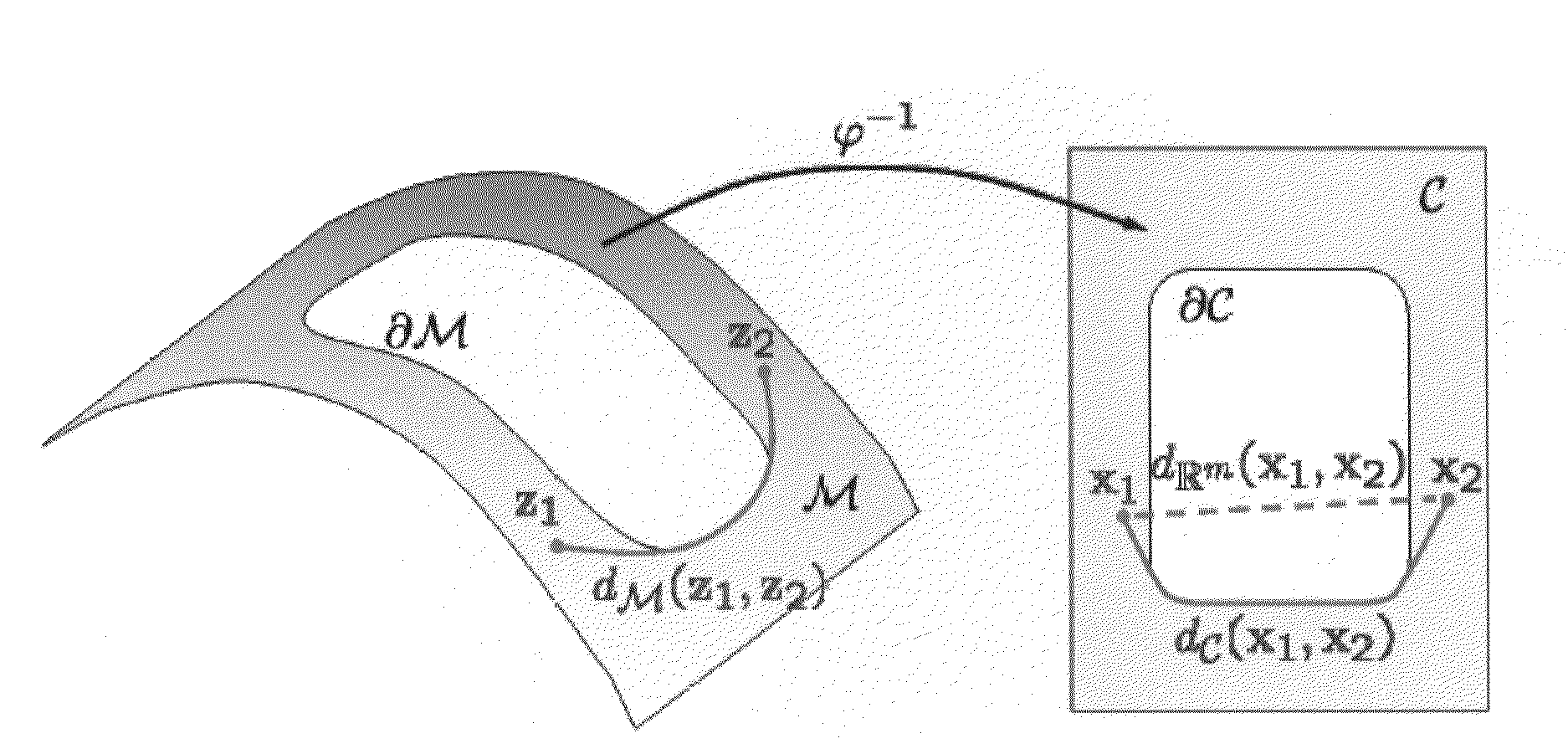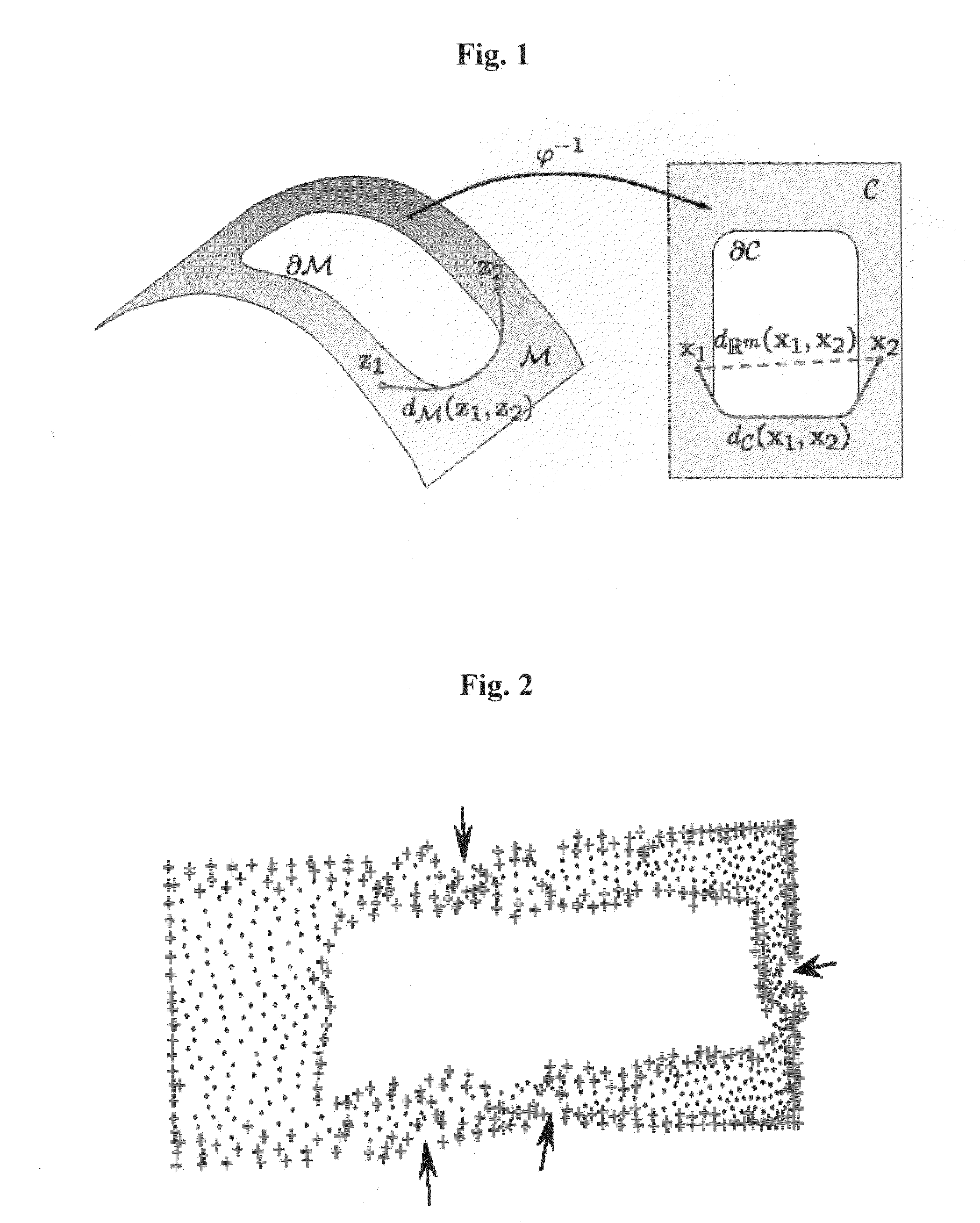Acceleration of multidimensional scaling by vector extrapolation techniques
a multi-dimensional scaling and acceleration technology, applied in the field of multi-dimensional data analysis, can solve the problems of many computationally expensive iterations, long time, and mds algorithms, and achieve the effects of shortening the time, high computational effort, and being easy to implemen
- Summary
- Abstract
- Description
- Claims
- Application Information
AI Technical Summary
Benefits of technology
Problems solved by technology
Method used
Image
Examples
Embodiment Construction
[0049]In the following detailed description of various embodiments, reference is made to the accompanying drawings that form a part thereof, and in which are shown by way of illustration specific embodiments in which the invention may be practiced. It is understood that other embodiments may be utilized and structural changes may be made without departing from the scope of the present invention.
[0050]Multidimensional scaling is a very broad term, encompassing both a wide class of problems and algorithms used for their solution. Generally speaking, an MDS problem consists of finding a representation for a set of N data points, given a set of dissimilarities between them. MDS problems (and as a result, algorithms thereof) differ in the definition of the dissimilarities and the manner in which the desired representation should approximate the dissimilarities (see for more details: Ingwer Borg and Patrick Groenen. Modern multidimensional scaling: Theory and applications. Springer Verlag...
PUM
 Login to View More
Login to View More Abstract
Description
Claims
Application Information
 Login to View More
Login to View More - R&D
- Intellectual Property
- Life Sciences
- Materials
- Tech Scout
- Unparalleled Data Quality
- Higher Quality Content
- 60% Fewer Hallucinations
Browse by: Latest US Patents, China's latest patents, Technical Efficacy Thesaurus, Application Domain, Technology Topic, Popular Technical Reports.
© 2025 PatSnap. All rights reserved.Legal|Privacy policy|Modern Slavery Act Transparency Statement|Sitemap|About US| Contact US: help@patsnap.com



